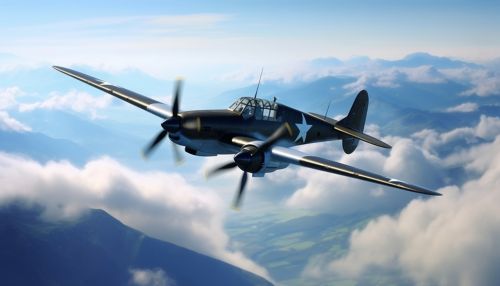Junkers Ju 87
Development
The Junkers Ju 87 was a German dive bomber and ground-attack aircraft. Designed by Hermann Pohlmann, it first flew in 1935. The Ju 87 made its combat debut in 1937 with the Luftwaffe's Condor Legion during the Spanish Civil War and served the Axis forces in World War II.


Design
The Ju 87 was a single-engine monoplane that was made primarily of duralumin, with the outer wings made of steel. The aircraft was designed to be easy to fly and maintain, which made it a favorite among pilots and ground crew alike. The Ju 87 was equipped with a single, fixed, spatted undercarriage to handle the stresses of dive bombing.
Operational History
The Ju 87 saw extensive service in the early days of World War II, particularly in the Blitzkrieg campaigns of 1939-1940. The aircraft was used in a variety of roles, including direct ground assault, anti-shipping, and even in an air superiority role. Despite its slow speed and relatively light armament, the Ju 87 was feared for its accuracy and the psychological impact of its dive-bombing attacks.
Variants
There were several variants of the Ju 87, each designed for a specific role. The most common variant was the Ju 87B, which was used extensively during the Blitzkrieg. Other variants included the Ju 87D, which was designed for ground attack, and the Ju 87G, which was equipped with two 37mm anti-tank cannons.
Legacy
Despite its reputation, the Ju 87 was not a particularly successful aircraft in terms of its combat effectiveness. Its slow speed and lack of defensive armament made it easy prey for enemy fighters. However, the Ju 87's distinctive design and the terror it instilled in its enemies have made it one of the most iconic aircraft of World War II.
